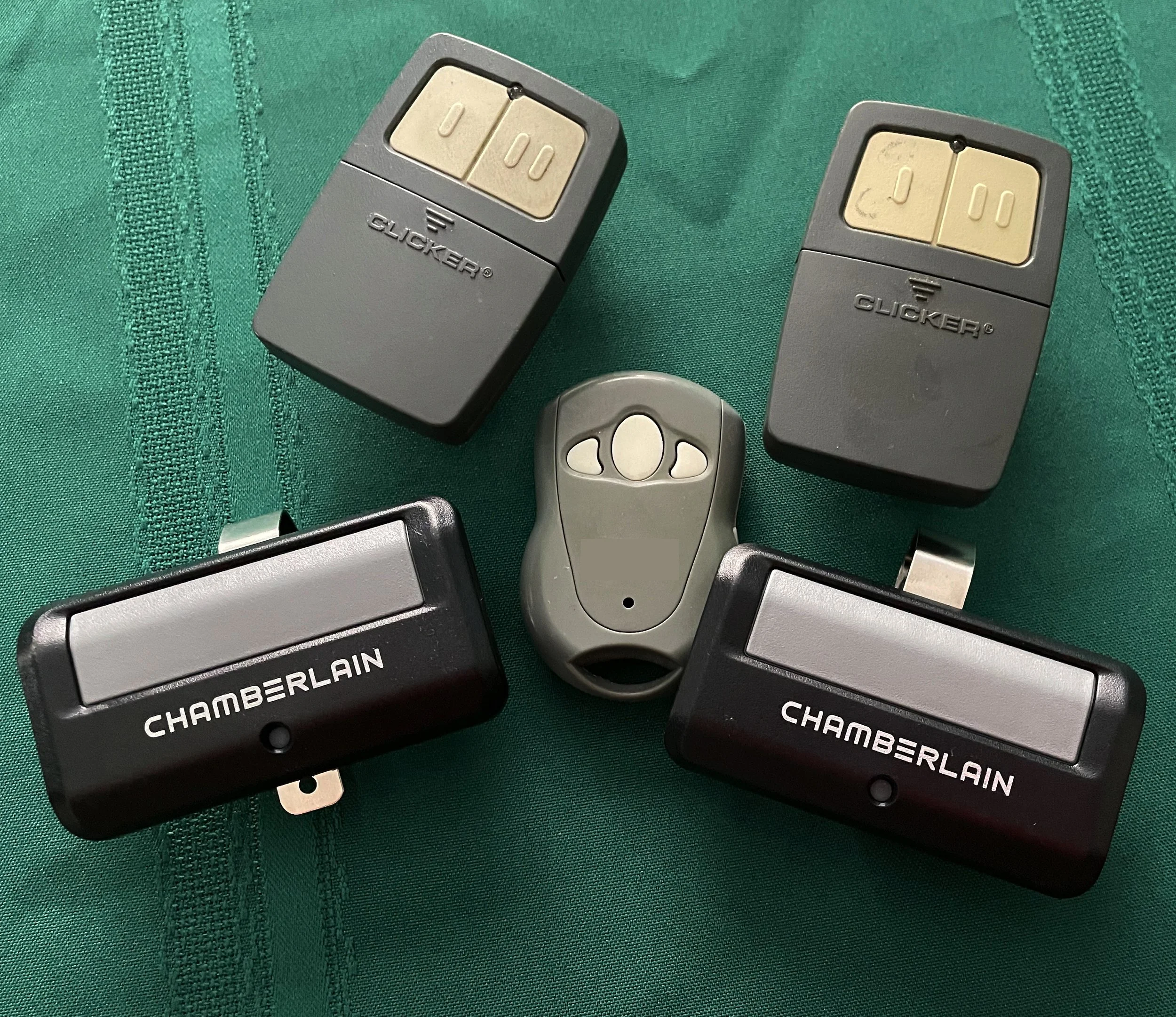Things to Know Before Buying a Smart Garage Door Opener
/Our garage door opener was beginning to show signs of old age dementia. It was 25 years old (I’m guessing that’s at least 100 in garage door years), and having trouble remembering what its function in life was – mainly to open and close the garage door in a reasonable manner. One symptom was that it would moan and groan as it worked to open or close the last two feet. Ahh, we thought… it just needs cleaning and lubricating, which we did, but this didn’t help. Maybe the rollers were the problem, but replacing them didn’t help either. Then, it began forgetting to turn the light off. Sometimes it would leave the light on a few hours; sometimes overnight. One day, when it opened the door partway, but no further, we knew it was retirement time for the old guy.
The opener was covered under our home warranty plan, so we called them, and a few days later a technician arrived to fix the problem. He agreed that the unit needed replacing, and scheduled a time to return with the new unit. A week later, and a few hours of his time, and the new unit was in place and working.
The new unit, like many new appliances and devices, is Wi-Fi-enabled. This has its pros and cons. Here are some considerations to ponder if you are planning to replace your garage door opener with the latest and greatest...
Belt-driven vs chain-driven
We opted to upgrade to a belt-driven unit as opposed to a chain-driven unit. The main difference is the noise level – a belt-driven unit is much quieter and in addition, requires less maintenance than a chain-driven unit. Conversely, a chain-driven unit is noisier but less expensive. The chain itself should be cleaned and lubricated annually, and if properly maintained, it usually lasts longer than a belt.
LED bulbs
The power conversion electronics in LED lights emit a high frequency noise which can interfere with the radio receiver in the opener. This means that if you put LED bulbs in the garage door opener, you may not be able to open the door using your remote or, if it does work, the range may be greatly limited. Incandescent bulbs will work, if you can find them, but CFL lights (the spiral shaped lights) are better. We, of course, had long since gotten rid of all our non-LED bulbs, and had to go buy more – which are now much more expensive than LEDs.
Incompatibility with remotes
It wasn’t until we tried programming the new unit to work with our collection of remotes that we discovered that the new, Wi-Fi-enabled garage door openers aren’t compatible with any of them. The unit came with two remotes, and we can buy more that are compatible with it, but the remote that works with our new opener won’t work with anything that requires cloning, like the remote we use to open the gate at the entrance to our community. Likewise, if you have a wall-mounted keypad outside or your car has a Homelink button, they may not work with the new unit either. We bought and installed a new, inexpensive, wireless keypad that does work with the new technology. We also found several “bridges”, ranging from $30 to $90 that claim to make old remotes and Homelink devices work with our new garage door opener, but we haven’t tried them yet.
A few of our non-compatible remotes
myQ App
Thankfully, the garage door opener doesn’t require an internet connection to perform all the basic functions you expect of it, like opening and closing the garage door with the push of a button without crushing the tricycle or bag of groceries that got left under the door. If your household Wi-Fi signal does reach your garage, however, you may want to connect it to the internet by downloading the myQ app. This app is available for either IOS or Android devices, and adds a number of capabilities. We didn’t think we needed or wanted any of these added capabilities, but found a couple that were useful. I talk more about them below.
Open or close on a schedule
We couldn’t understand why we might want to open or close our garage door on a schedule, but then thought back to the rare occasions when we discovered, upon leaving the house in the morning, that we’d forgotten to close the garage door the night before, leaving it open all night. Now I’ve set up a schedule that automatically closes the door each night at 9 PM. If the door is already closed, it stays closed, but if we did forget to close it, the app will automatically close it each night.
Open and close remotely
I doubt we’d use this feature much, but if we ever wanted to allow entry to visiting guests or repairmen while we’re away, we could let them in by opening the garage door using our smartphone. Likewise, once the repairman was leaving, we could close the door behind him.
Amazon delivery
This is another capability I doubt we’ll use, but which may be desirable for others. With your permission, the app allows Amazon delivery people access to your garage, so there’s no worry about porch pirates stealing your packages.
Check whether open
Did you ever get halfway to the grocery store, then wonder whether you remembered to close the garage door? With the myQ app, it’s quite easy to check whether the door is closed, and close it if necessary. (What I also need is an app that, once I’m inside the store, lets me check whether I remembered to lock the car. This will have to wait until we buy a new car someday).
Get alerts
This feature alerts you whenever the garage door is opened or closed or open for more than a selectable amount of time. We don’t need more alerts on our phone and probably won’t use this feature, but it might be useful if you are worried about someone breaking into your car to get access to the garage door remote, and entering your home via the garage. Come to think of it, this would have been nice when we had teenagers in the house who hoped we wouldn’t notice they were coming home way after their curfew.
Security issues
In general, new garage door openers are much more secure than the old ones, including the one we just replaced. They used to have fixed codes set with dip switches. The number of unique codes typically ranged from 16 to 1024, and a bad guy could drive around a neighborhood with three or four remotes and continually press the buttons until someone’s door opened. There were also electronic boxes that recorded the transmitted code sent by the owner’s remote and saved it for later use.
The newer units utilize a much more sophisticated method called a rolling code. Instead of using a fixed, unchanging code to operate the door, the new technology creates and sends a new, unique code every time the remote is used. The rolling code technique is much more difficult for the bad guys to hack or clone.
On the other hand, being Wi-Fi-enabled and connected to your home network provides other opportunities for hackers. If someone were to gain access to your home network, opening the garage door would be easy. Likewise, the myQ app could be compromised, or access to your home network could be gained through the garage door opener. The first steps in preventing a hacker gaining access to your system is using a strong password, using a two-factor verification process, and/or a biometric authentication method like fingerprints or facial recognition.
Software updates
Finally, if your garage door opener ever needs a software update, it can be done automatically via Wi-Fi.
Our feelings about our new garage door opener went from “Wow – is this thing quiet” to “Why ever would we need the myQ app and all those stupid features?” to “What the Hell! None of our old remotes work with it”, to “Okay, maybe some of the myQ features are kinda nice”.
The big question is, knowing what we know now, would we do it again, or would we find an updated version of our older, dumb garage door opener? Had you asked this question right after my discovery that all our old remotes were incompatible, I might have answered that I wished we had stayed with the dumb design. After using it for a few months, however, I’m starting to like the new smart features. I guess we’ll keep it.
See you next time…










